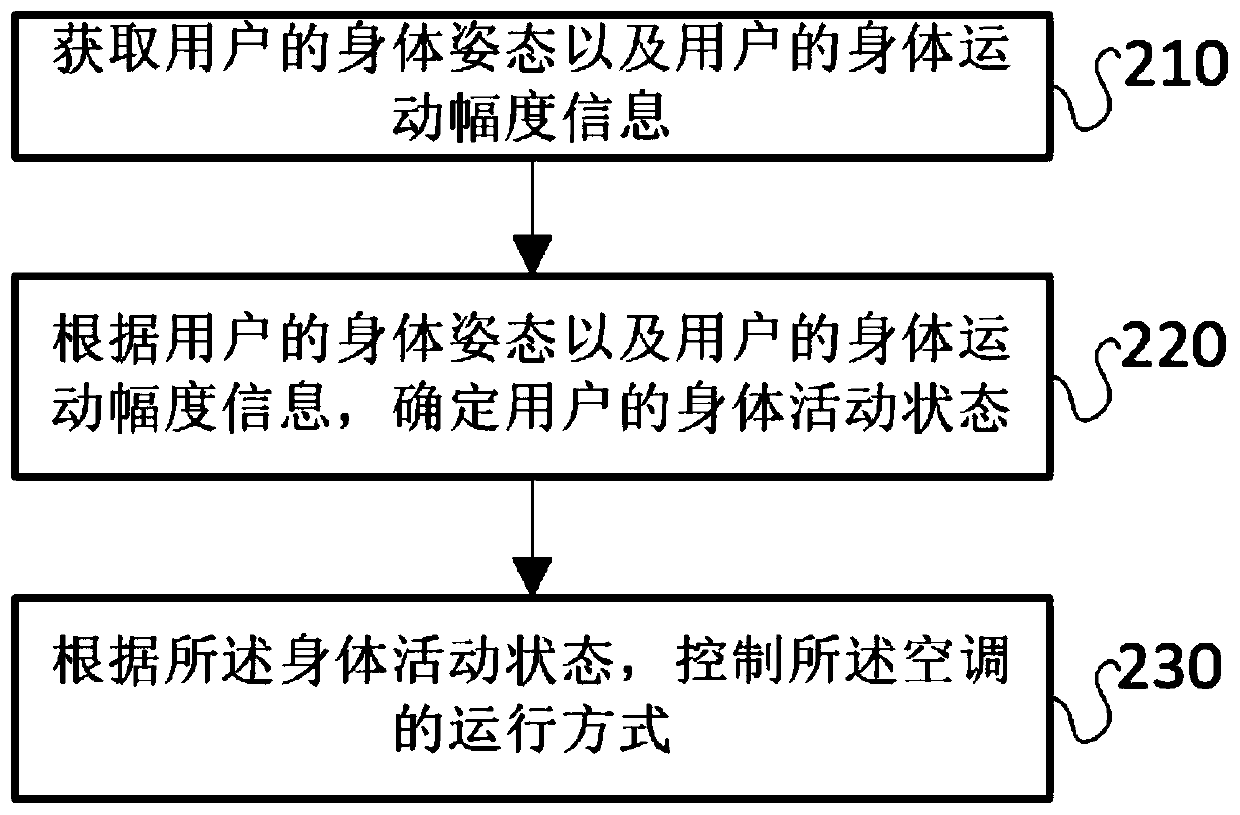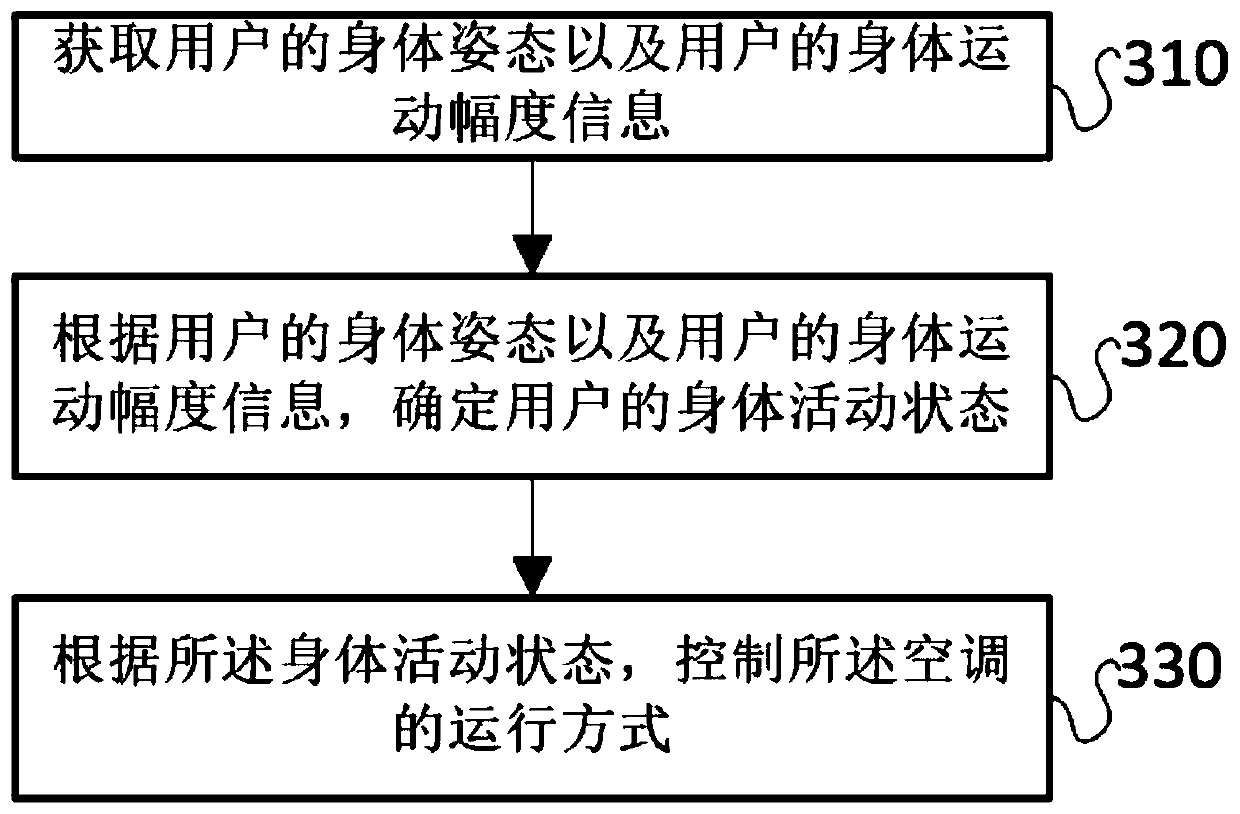Air conditioner control method and device, storage medium and home equipment
A control method and air-conditioning technology, applied in space heating and ventilation control input, mechanical equipment, lighting and heating equipment, etc., can solve a large amount of image data, take a period of time to identify and output, a large amount of manpower, material resources and other problems, to achieve The effect of improving user experience
- Summary
- Abstract
- Description
- Claims
- Application Information
AI Technical Summary
Problems solved by technology
Method used
Image
Examples
Embodiment 1
[0041] According to an embodiment of the present invention, an air conditioner control method is provided, figure 1 It shows a schematic flowchart of an air-conditioning control method proposed in Embodiment 1 of the present invention, as shown in figure 1 As shown, the air conditioner control method may include: Step 110 to Step 130 .
[0042] In step 110, the user's body posture and the user's body motion amplitude information are acquired.
[0043] Here, the user's body posture and the user's body motion amplitude information can be obtained through radar or image acquisition.
[0044] In step 120, the user's physical activity state is determined according to the user's body posture and the user's body motion amplitude information.
[0045] Here, the user's activity state is obtained according to the user's body posture and the user's motion range information. By combining the user's body posture and the user's motion range information, the body posture recognition is co...
Embodiment 2
[0050] On the basis of the above embodiments, the present invention may also provide an air conditioner control method. figure 2 It shows a schematic flowchart of an air-conditioning control method proposed in Embodiment 2 of the present invention, as shown in figure 2 As shown, the air conditioner control method may include: Step 210 to Step 230 .
[0051] In step 210, the user's body posture and user's body motion range information are acquired.
[0052] Here, the user's body posture and the user's body motion amplitude information can be obtained through radar or image acquisition.
[0053] In step 220, the user's physical activity state is determined according to the user's body posture and the user's body motion amplitude information.
[0054]Here, the user's activity state is obtained according to the user's body posture and the user's motion range information. By combining the user's body posture and the user's motion range information, the body posture recognition...
Embodiment 3
[0065] On the basis of the foregoing embodiments, Embodiment 3 of the present invention may further provide an air conditioner control method. image 3 A schematic flowchart of an air-conditioning control method proposed in Embodiment 3 of the present invention is shown. Such as image 3 As shown, the air conditioner control method may include: Step 310 to Step 330 .
[0066] In step 310, the user's body posture and user's body motion amplitude information are acquired.
[0067] Here, the user's body posture and the user's body motion amplitude information can be obtained through radar or image acquisition.
[0068] In step 320, the user's physical activity state is determined according to the user's body posture and the user's body motion range information.
[0069] Here, the user's activity state is obtained according to the user's body posture and the user's motion range information. By combining the user's body posture and the user's motion range information, the body ...
PUM
 Login to View More
Login to View More Abstract
Description
Claims
Application Information
 Login to View More
Login to View More - R&D
- Intellectual Property
- Life Sciences
- Materials
- Tech Scout
- Unparalleled Data Quality
- Higher Quality Content
- 60% Fewer Hallucinations
Browse by: Latest US Patents, China's latest patents, Technical Efficacy Thesaurus, Application Domain, Technology Topic, Popular Technical Reports.
© 2025 PatSnap. All rights reserved.Legal|Privacy policy|Modern Slavery Act Transparency Statement|Sitemap|About US| Contact US: help@patsnap.com



